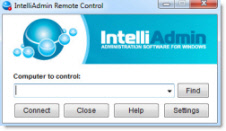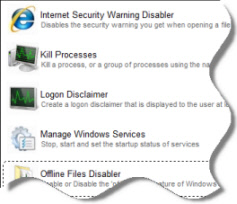Network registry usage in 2008
I need to modify the registry settings on a hive that is not active. (e.g. alternate OS install, VHD). I know that multiple keys get linked together to form the whole network package. Some that I've found (but without any documentation that I can find) are:Control\Nsi\{eb004a11-9b1a-11d4-9123-0050047759bc}\10 - I know the NIC GUIDs are embedded, but I would feel more comfortable knowing the data structure.Control\Nsi\{eb004a01-9b1a-11d4-9123-0050047759bc}\10 - IP6 address embedded in the name. Looks like the NetLuidId as well, but I'm not positive.Control\Network - Config has various settings.All documentation that I've found has been sketchy at best and usually barely looking at 2000.Is there any architechual document that describes how the registry goes from the registry enum setting where the NIC is defined through to the services?Thanks,Ed
October 14th, 2008 6:34pm
Hello,
May I know why you need these information?
If you created a virtual machine with a coped VHD file from another virtual machine, and you found that you cannot set static IP setting to the network connection, you can refer to John Howard's blog to resolve this:
http://blogs.technet.com/jhoward/archive/2008/07/22/hyper-v-why-is-networking-reset-in-my-vm-when-i-copy-a-vhd.aspx
We do not recommend that you directly change the registry. We have many tools or methods to resolve problems and achieve what people need.
Unfortunately, we don't have any document for such information about "how the registry goes from the registry enum setting where the NIC is defined through to the services", and I didn't find any through the Internet.
Just for your reference, based on my knowledge, the general procedure should be:
==============================
1. After you add a new NIC into the computer and after you boot the system, PnP manager will find the newly added device and create a relevant device object for it.
2. The newly created device object' information is restored at "HKEY_LOCAL_MACHINE\SYSTEM\CurrentControlSet\Enum\PCI\" (I am assuming the NIC is on the PCI bus).
3. You can find the exact path by right-click the device in Device Manager and click Properties. On the Details tab, select the Device Instance Path from the drop down list. For example, under my environment, it may be " HKEY_LOCAL_MACHINE\SYSTEM\CurrentControlSet\Enum\PCI\VEN_14E4&DEV_167A&SUBSYS_01DA1028&REV_02\4&19633ca3&00E4\".
Under this key, there is a value named "Driver". It stores the data like "{4d36e972-e325-11ce-6fc1-08002be103183}\0006" which is used to point to the driver instance.
4. Navigate to path "HKEY_LOCAL_MACHINE\SYSTEM\CurrentControlSet\Control\Class\{4d36e972-e325-11ce-6fc1-08002be103183}\0006", as mentioned in step 4.
Under this key, there is a value named "NetCfgInstanceId" stores the data like "{CDF31D57-4976-419B-BE8A-D01E600A4E25}" which points to the network connection.
5. Navigate to path "HKEY_LOCAL_MACHINE\SYSTEM\CurrentControlSet\Control\Network\{4d36e972-e325-11ce-6fc1-08002be103183}\{CDF31D57-4976-419B-BE8A-D01E600A4E25\connection".
Under this key, you will find the value named "Name" indicated which network connection it points to.
6. The key "Control\Nsi\{eb004a11-9b1a-11d4-9123-0050047759bc}\10" that you mentioned is to store all the network connection related information.
So, device instance, driver instance together make up the network connection.
As I mentioned previously, this is just for your reference, and you cannot rely on this information to make any changes to the registry.
Best regards,Chang Yin
Free Windows Admin Tool Kit Click here and download it now
October 16th, 2008 3:43pm


